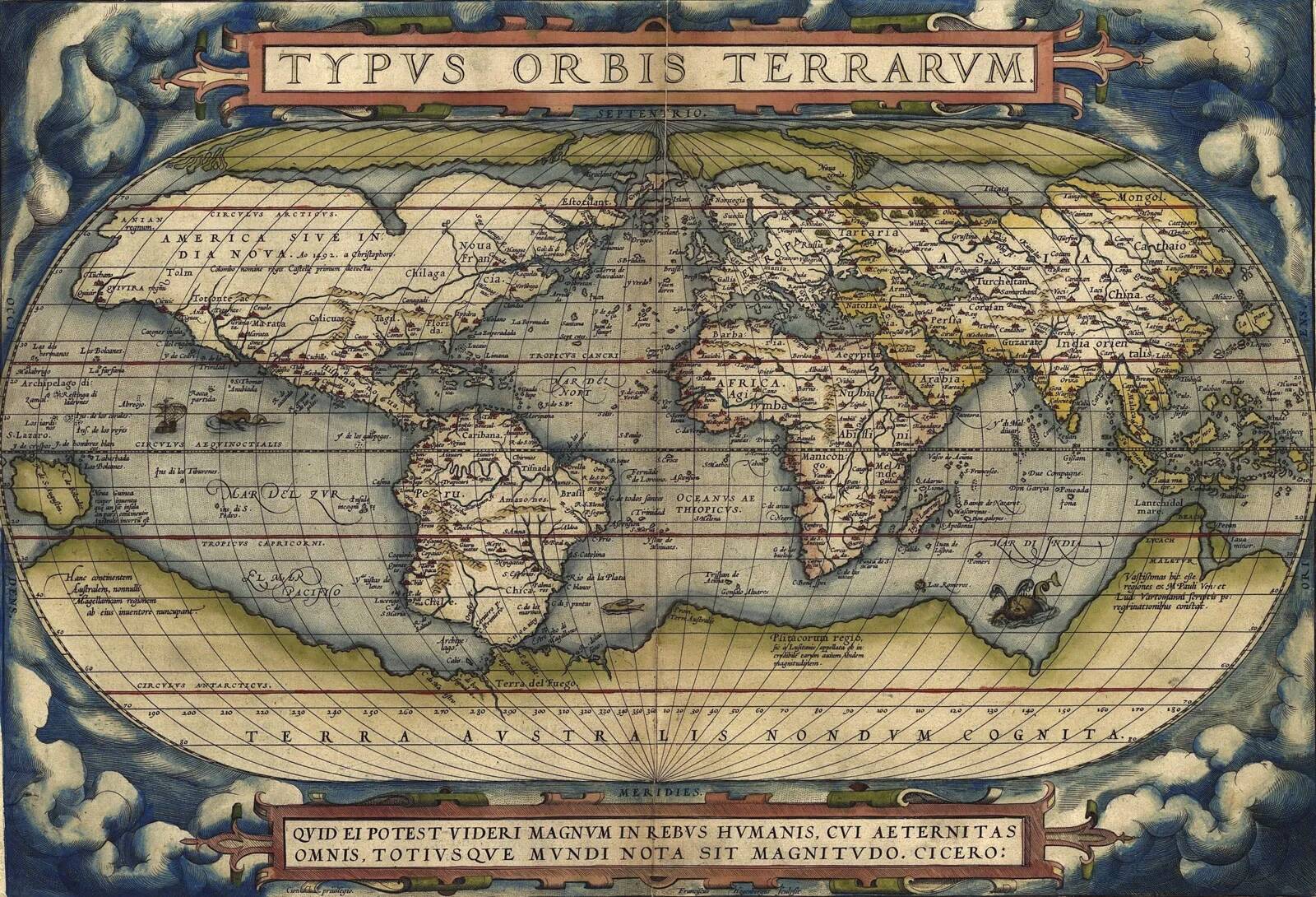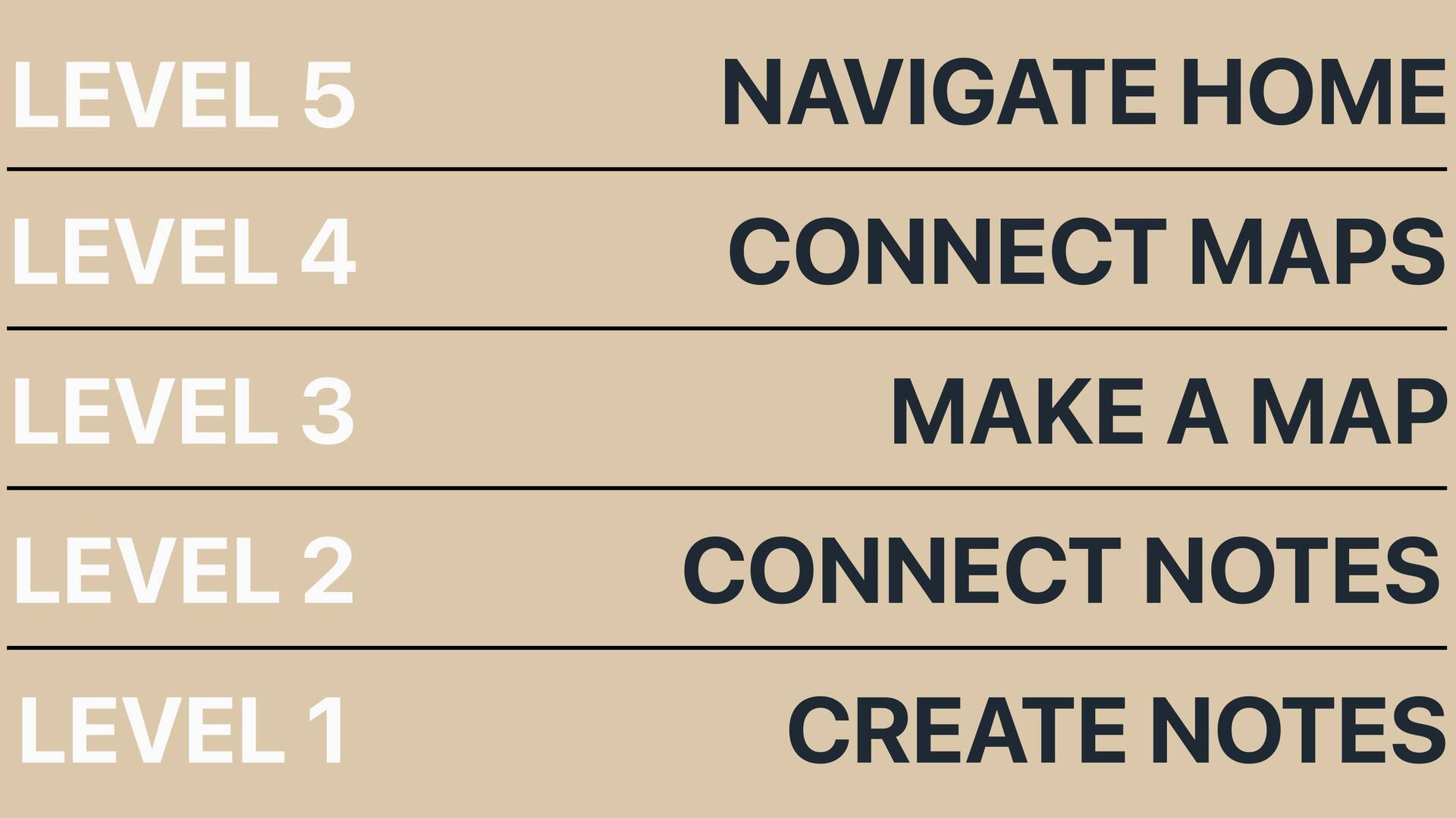
An atlas is a collection of maps, typically organized by geographical region or theme. It provides a comprehensive overview of different places, including their locations, boundaries, and other relevant information. A person who makes maps is called a cartographer.
WHY IT MATTERS: After making many MOCs (Maps of Content), we get used to being able to easily access them. We can accomplish this with two complementary notes:
- A library: is a collection of resources that are organized and made accessible for reference purposes. Libraries often cover a wide range of subjects and genres, catering to the different interests and needs of their users. They provide a space for learning, research, and leisure reading.
- A home: This will be your own custom solution. We’ll discuss the home note tomorrow.
GO DEEPER: When we connect our maps together in one place, we create our own library of notes. This library will serve as the knowledge scaffolding on which we can build our understanding.
BOTTOM UP. TOP DOWN. MIDDLE OUT.
You may have already noticed something pretty cool about the idea emergence framework. It encourages fluid thinking. It' works for top-down thinkers and enjoyed by bottom-up thinkers.
Which kind of thinking type do you more resonate with?
- Top Down approach - Once you have a topic, your next step is to find relevant notes.
- Bottom Up approach - If you already have notes, your next task is to organize them and create higher-order notes.
- Middle Out approach - Begin with your MOC notes.
- GOING DOWN - Identify any gaps in your notes, which will inform you about the additional notes you need to gather in the future.
- GOING UP - Connect and relate different MOCs together to create even more higher-order notes.
However your brain works, you can follow your curiosity wherever it takes you.
This library note that we're creating is intended to provide an overarching context for top-down thinkers like myself.
HOW TO STRUCTURE YOUR LIBRARY
Many libraries around the world use The Cutter System, The Dewey Decimal System, and The Universal Decimal Classification System to organize their information. You can totally do this if this makes sense to you. However, I take a different approach that works better for me.
I organize my knowledge around my Areas of Life. Things in life that are indefinite in duration and have a standard to be maintained.
LEADING YOURSELF
Manage Yourself
- Task Management
- Project Management
- Goal Management
- Time Management
Develop Yourself
- Develop Habits
- Develop Knowledge
- Develop Energy
- Develop Skills
Express Yourself
- Through Writing
- Through Innovation
- Through Decision Making
- Through Public Speaking
LEADING OTHERS
Set The Direction
- Vision
- Strategy
- Resource Allocation
Align The Organization
- Culture
- Operating Rhythm
Develop The People
- Organization Design
- Guiding Principles
- Talent Management
BUSINESS
Value Proposition
- What Are You Gonna Make?
- Who is it For?
- How Much Will You Charge?
Marketing
- Warm Outreach
- Cold Outreach
- Organic Content
- Paid Ads
Sales
- Pitching
- Objection Handling
- Sales Funnels
Value Delivery
- Systems
- Customer Service
Finance
- Financial Offense
- Financial Defense
In conclusion, creating our own library of notes allows us to connect our maps together and build a comprehensive knowledge scaffolding. Whether you resonate with a top-down, bottom-up, or middle-out thinking approach, following your curiosity and organizing your knowledge around areas of life can help you navigate and understand complex subjects. Become the cartographer of your own knowledge library and design your ideaverse of knowledge.
By structuring our library and continuously expanding our knowledge, we can create a powerful resource for personal growth, innovation, and decision-making. So, let's continue the journey of exploration and learning, building our own library of notes to unlock new insights and perspectives.
more tomorrow,
Hunter
